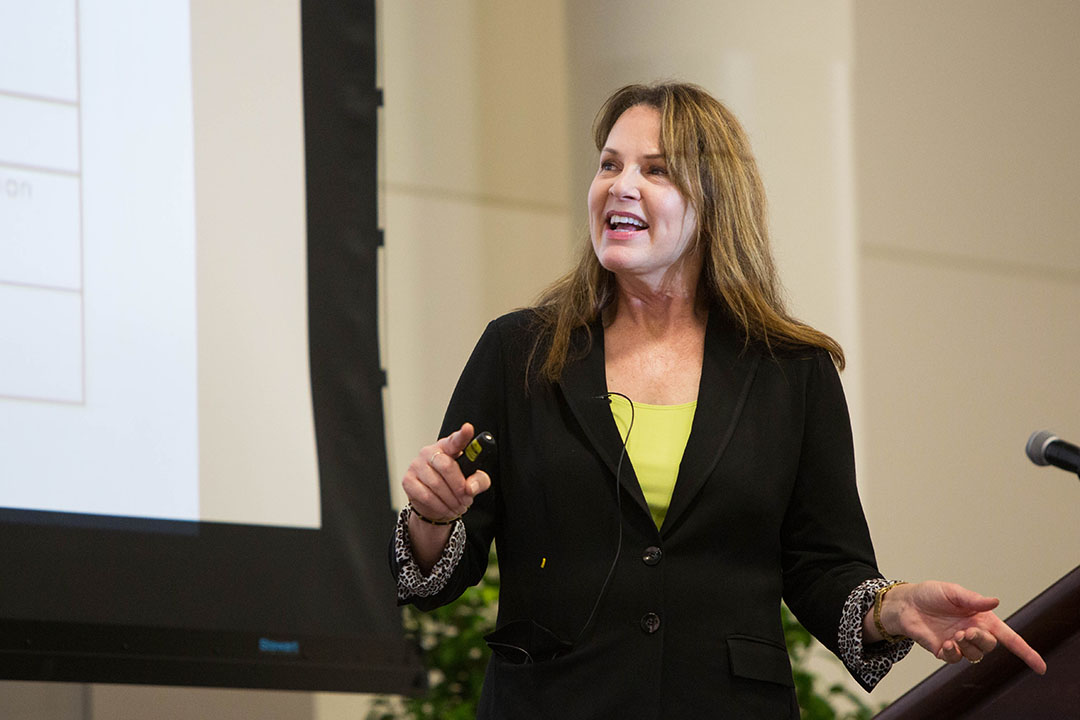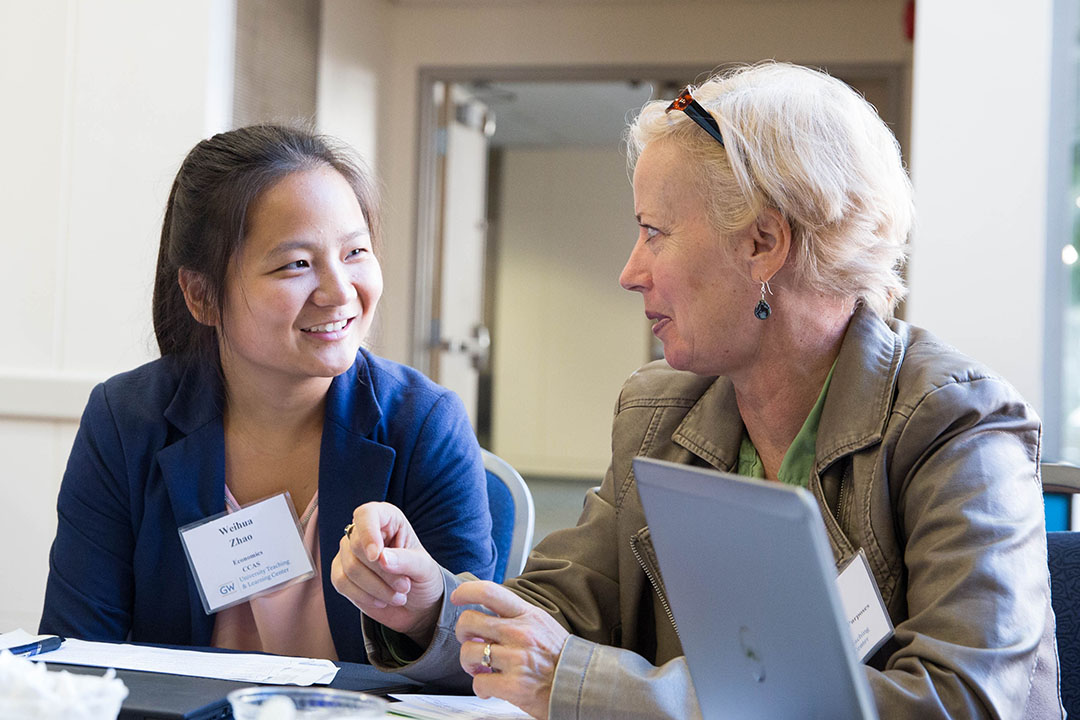By Ruth Steinhardt
The George Washington University held its fifth annual Teaching Day on Friday, gathering 200 faculty members for a daylong exploration of the techniques and philosophies of effective pedagogy, sponsored by the University Teaching and Learning Center (UTLC).
Provost Steven Lerman said the day served as a reminder that GW’s growing strength as a research institution was not an indicator of decreased focus on teaching. “I have never believed that good research and good teaching are necessarily in conflict,” he said. “But I think it takes a degree of intentionality to avoid messaging, either intentionally or unintentionally, that we don’t care about teaching. We do.”
For the second year, participants from across the university could join faculty-led sessions over the course of the day. More than 20 faculty members facilitated the 12 workshops, which covered issues including writing in the disciplines, project-based service learning and cross-disciplinary research. Teaching Day attendees also visited the second annual Teaching Support Fair, where representatives from campus groups that support teaching and learning provided information about the resources they offer.
“[Teaching Day] always helps open us to new ways we can engage our students,” said Karen Wright, an assistant professor in the School of Medicine and Health Sciences and interim chair and program director of the Physician Assistant Studies program who has attended Teaching Day for several years.
Keynote speaker Elizabeth Barkley, an expert on collaborative learning techniques, had faculty assume the role of students for an experiential presentation on group learning. A professor of music at Foothill College in Los Altos, Calif., Dr. Barkley has developed a set of 35 collaborative learning techniques, designed “to expand [teachers’] repertoire of group activities,” she said.

Keynote speaker Elizabeth Barkley. (Photo: Logan Werlinger)
At tables throughout the Marvin Center Grand Ballroom, groups of six to eight faculty members were given the comprehensive list of the collaborative learning techniques. They fall into six categories—discussion, reciprocal peer teaching, problem solving, graphic information organization, writing and games. Dr. Barkley designed the techniques to maximize engagement and to combat problems like self-consciousness.
Building on a common practice called “Think-Pair-Share,” for example, participants considered a question individually for a few minutes. Then, they discussed and compared responses with a partner before sharing with the entire class.
When collaborating, students are required to either speak or listen for one minute, after which speakers are required to listen while the listeners speak.
“This might be difficult for us, because we’re all professional talkers,” Dr. Barkley joked before launching faculty into the exercise.
The usefulness of Think-Pair-Share in its fullest form, she said, is in reducing the risk associated with class discussion. It gives students, particularly those who are shy or uncertain of their language skills, a chance to rehearse their comments before sharing with a larger group.
Each of the 35 collaborative learning techniques has a similarly specific and practical purpose, she said, making them a useful toolbox for faculty across every discipline.
At their tables, faculty brainstormed and recorded how to incorporate the techniques into their teaching. The results will be collated by UTLC staff into a “group knowledge repository” and will be accessible online.
“[The repository means] we’re going to be able to continue the conversation, which we’ve never been able to do at Teaching Day before,” said Patricia Dinneen, UTLC director.
Nancy Falk, an assistant professor in the School of Nursing, said the group activities provoked her to think about how to engage her mostly online student base.
“It made me think about how I might change the way I use the face time I get with them,” she said.
For new faculty, the day served both as a learning experience and a chance to get to know colleagues whose paths might not otherwise cross.
Visiting professor Jennifer Wall, also in SMHS, sat at a table with colleagues from the School of Nursing and the School of Media and Public Affairs.
“I liked learning how other departments are troubleshooting,” Dr. Wall said. “It’s kind of a shared commiseration, and it gets you thinking about how to apply their techniques to your own students. I’m new, so I’m a sponge for this stuff.”


